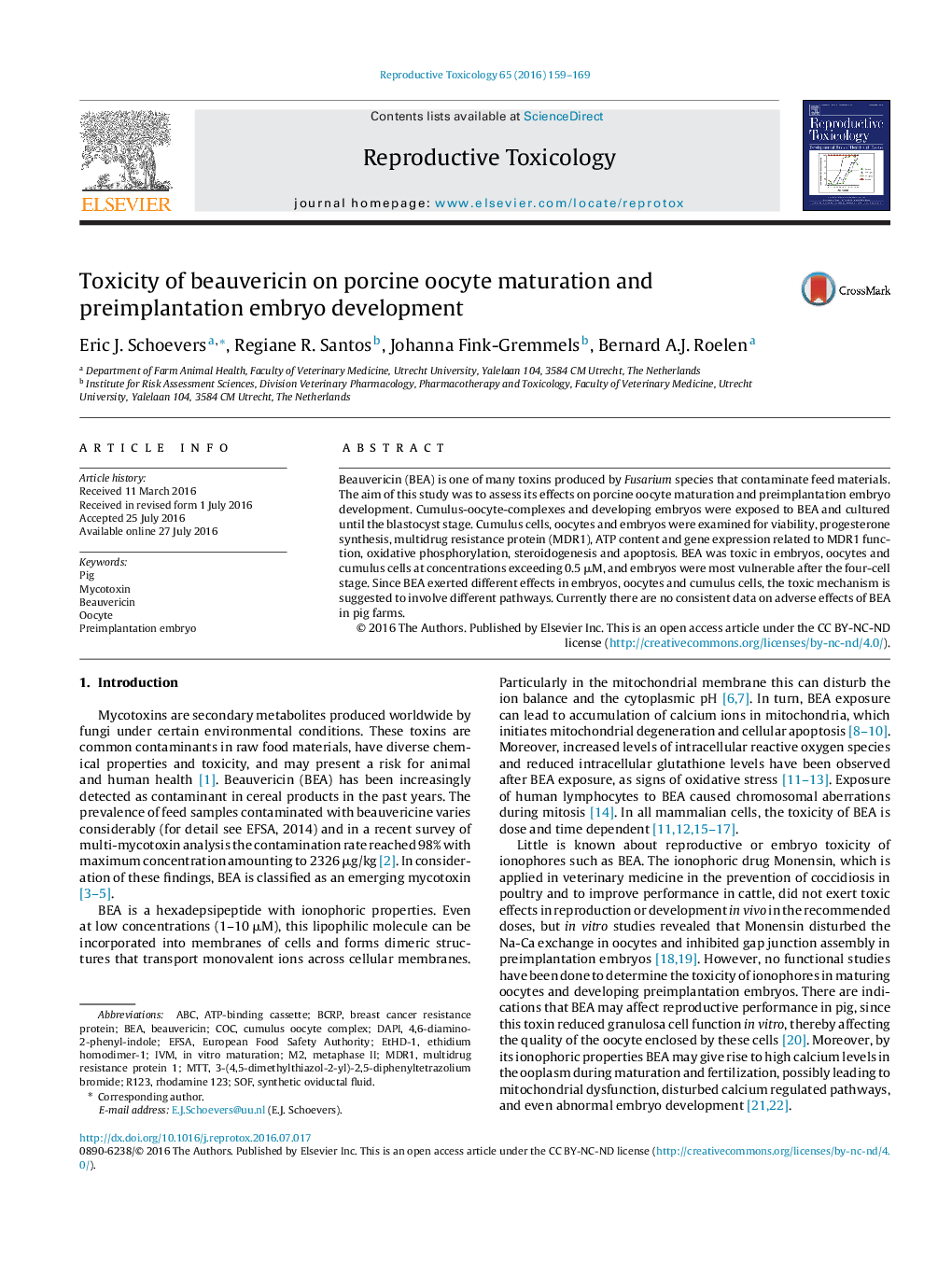| Article ID | Journal | Published Year | Pages | File Type |
|---|---|---|---|---|
| 5857931 | Reproductive Toxicology | 2016 | 11 Pages |
Abstract
Beauvericin (BEA) is one of many toxins produced by Fusarium species that contaminate feed materials. The aim of this study was to assess its effects on porcine oocyte maturation and preimplantation embryo development. Cumulus-oocyte-complexes and developing embryos were exposed to BEA and cultured until the blastocyst stage. Cumulus cells, oocytes and embryos were examined for viability, progesterone synthesis, multidrug resistance protein (MDR1), ATP content and gene expression related to MDR1 function, oxidative phosphorylation, steroidogenesis and apoptosis. BEA was toxic in embryos, oocytes and cumulus cells at concentrations exceeding 0.5 μM, and embryos were most vulnerable after the four-cell stage. Since BEA exerted different effects in embryos, oocytes and cumulus cells, the toxic mechanism is suggested to involve different pathways. Currently there are no consistent data on adverse effects of BEA in pig farms.
Keywords
BcrpBEAR123EthD-1SOFIVMMDR1ABCCOCDAPIEFSA3-(4,5-dimethylthiazol-2-yl)-2,5-diphenyltetrazolium bromideMTTethidium homodimer-1European Food Safety AuthorityIn vitro maturationBeauvericinoocytepreimplantation embryoPigRhodamine 123metaphase IIMycotoxinbreast cancer resistance proteinmultidrug resistance protein 1cumulus oocyte complexATP-binding cassette
Related Topics
Life Sciences
Environmental Science
Health, Toxicology and Mutagenesis
Authors
Eric J. Schoevers, Regiane R. Santos, Johanna Fink-Gremmels, Bernard A.J. Roelen,
